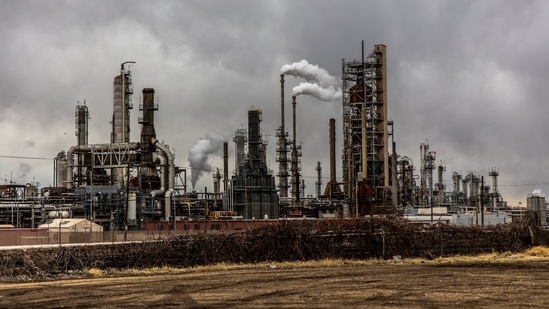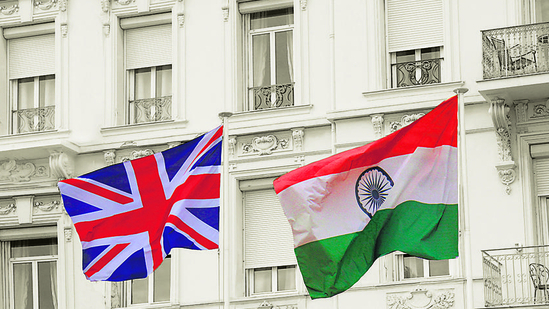QUICKREADS

India needs an AI-driven manufacturing revolution
India aims to boost manufacturing to $1 trillion by embracing AI technologies. By integrating robotics, machine learning, and smart systems, the country can enhance productivity, address skills gaps, and become a global manufacturing leader through innovative, technology-driven strategies.

Air pollution and stroke: The hidden threat
Air pollution significantly increases stroke risk, with PM2.5 particles causing inflammation and vessel narrowing. WHO reports 24% of global stroke deaths linked to air pollution. Urban and rural areas in India face high exposure, necessitating awareness, personal protection, and policy changes.

India’s policy blueprint for smart logistics
India aims to revolutionize logistics through autonomous vehicles on dedicated freight corridors. The strategy involves AI-powered lanes, 5G connectivity, satellite tracking, and automated port systems to reduce transportation costs, improve efficiency, and position India as a global logistics leader.

Digital education can bridge inequality and shape the future
Digital education can bridge inequality by transforming learning through technology, offering accessible, flexible education. Despite challenges like unequal internet access, it empowers learners with digital skills, preparing them for future job markets and breaking generational poverty cycles.

India should now push hard and fast for a trade deal
Trump's Indian-American-laden administration shows growing political alignment. With increasing Indian-American support and shared immigration views, both leaders are positioned to pursue a substantial bilateral trade deal potentially expanding trade from $129 billion to $500 billion by 2030.

A call to action for India’s heart health
India faces a critical heart health crisis, with cardiovascular diseases causing over 25% of deaths. Young Indians are increasingly at risk due to lifestyle factors like obesity, hypertension, and stress. Early screening, prevention, and AI-driven technologies offer hope for managing this emerging health challenge.

Empowering women entrepreneurs to lead economic transformation
The EWE program empowers rural women entrepreneurs across India, providing skills, training, and financial literacy. Through initiatives like Gauri's sewing collective and Smita's beauty parlor, women are transforming their lives, driving economic growth, and challenging systemic barriers.

Challenges of communicating public health information
India's linguistic diversity challenges public health communication, with many official health announcements poorly translated or unavailable in regional languages. This leads to misinformation, reduced health compliance, and inequitable access to critical health information across diverse communities.

India rides the WAVES: Next chapter of the global media story
India's media and entertainment sector is evolving with interactive, AI-driven storytelling. WAVES 2025 highlights mobile-first content, regional language engagement, and global collaborations. The industry is projected to reach $73 billion by 2027, driven by digital innovation and participatory experiences.

Waste to wonder: Why redeveloping landfills is worth doing
Landfills worldwide are being transformed into vibrant parks, industrial zones, and urban spaces. Examples like Fresh Kills, Jurong Island, and Mount Trashmore showcase innovative land reclamation, turning waste sites into sustainable, functional areas through careful engineering and environmental strategies.

Impact of financial inclusion on emissions in India
Financial inclusion in India shows complex effects on carbon emissions. Research from 1990-2018 reveals interconnections between financial systems and environmental outcomes, highlighting the potential for sustainable development through strategic capital allocation.

UK-India collaboration for a sustainable future
The UK and India are collaborating to drive sustainable development, focusing on renewable energy, climate action, and socio-economic progress. Both countries aim to achieve net-zero emissions, foster innovation, and create inclusive economic growth through public-private partnerships.

Why non-profits must embrace analytics
Non-profits are increasingly adopting data analytics to enhance decision-making, optimize resources, and showcase impact. Advanced technologies like AI help track effectiveness, understand trends, and improve strategies across fundraising, employment, and program development.

Unleashing India’s gender dividend: Dismantling demand-side barriers
India's economic growth hinges on unleashing women's potential. Despite improved labor force participation, demand-side barriers persist. Addressing workplace flexibility, bias, and career progression can unlock 196 million employable women, significantly boosting national GDP and economic development.

Not every chest pain is a heart attack
Aortic dissection, a rare but deadly condition, mimics heart attack symptoms. Characterized by sudden severe chest pain, it can lead to internal bleeding, stroke, or death. Primarily affecting older men, it requires immediate medical attention and lifelong management.






